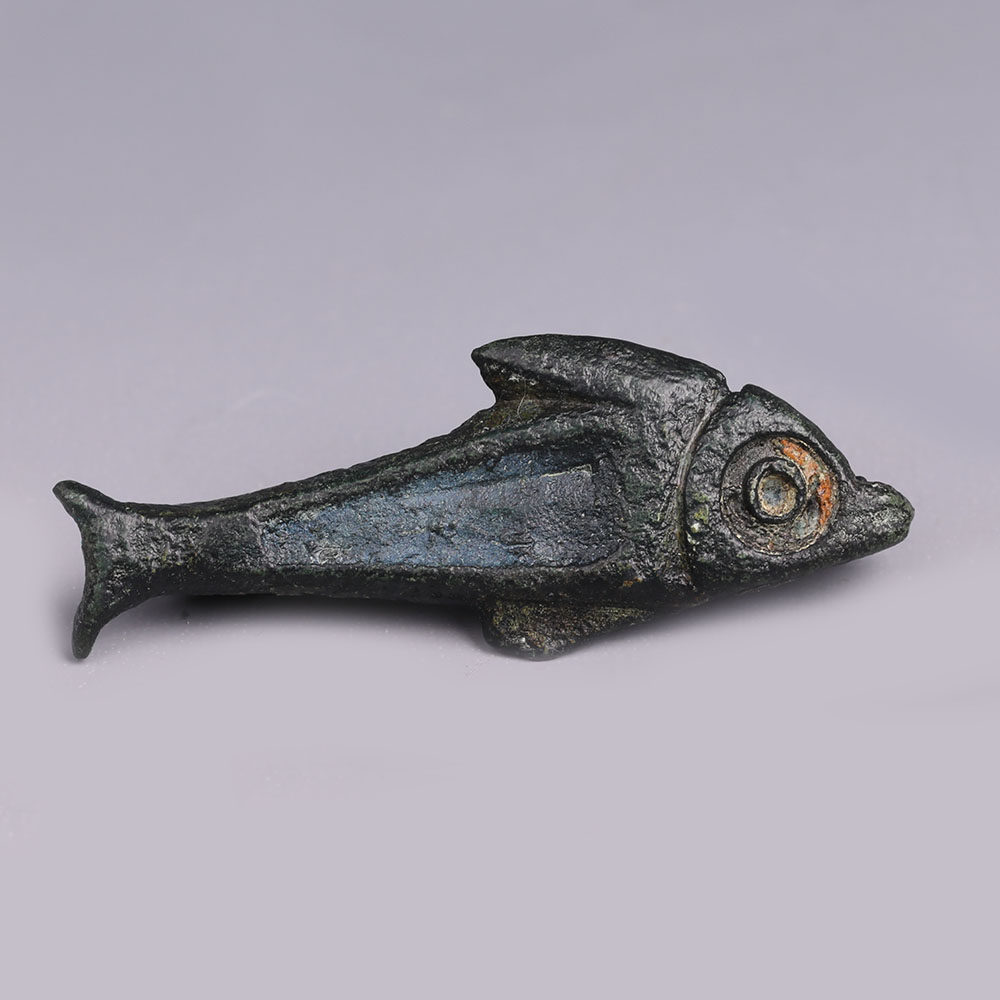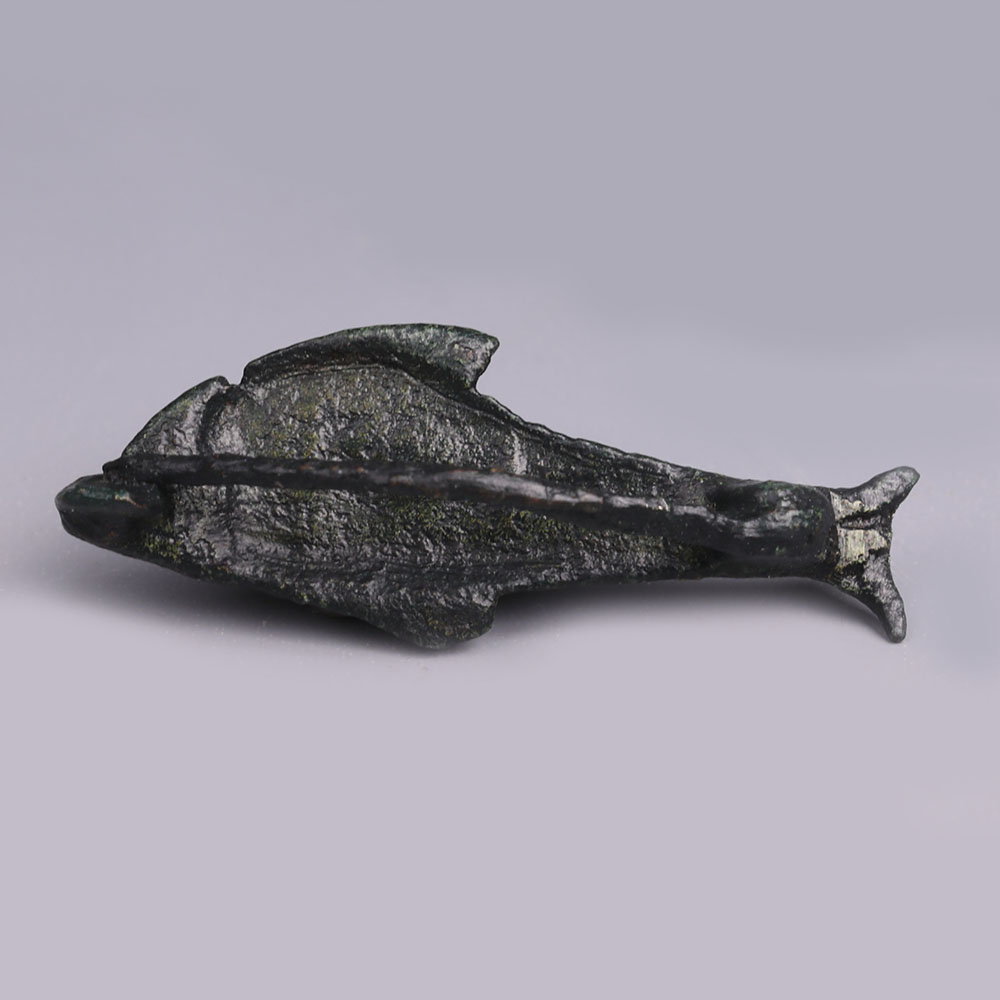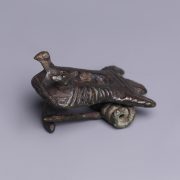Fibulae or brooches were originally used in Ancient Greece and in the Roman Empire for fastening garments, such as cloaks or togae. The fibula designs developed into a variety of shapes, but all were based on the safety-pin principle. The Roman conquests resulted in a spread of Roman culture and therefore the use of the fibula, which became the basis for more complicated and highly decorated brooches, modelled in bronze, silver and gold and further enriched with precious and semi-precious gemstones. Fibulae are the most common artefact-type in burials and settlements throughout much of continental Europe. By the Middle Ages, the Roman safety pin type of fibula had fallen into disuse.
Dolphins, along with salmon, are amongst the most common of aquatic zoomorphic brooches represented. Most likely they were amuletic as the dolphin held Celtic religious symbolism. It was a motif also favoured by the Roman, so it’s popularity is not unusual. Brooches featuring enamelled decoration were popular in the 2nd century AD.


